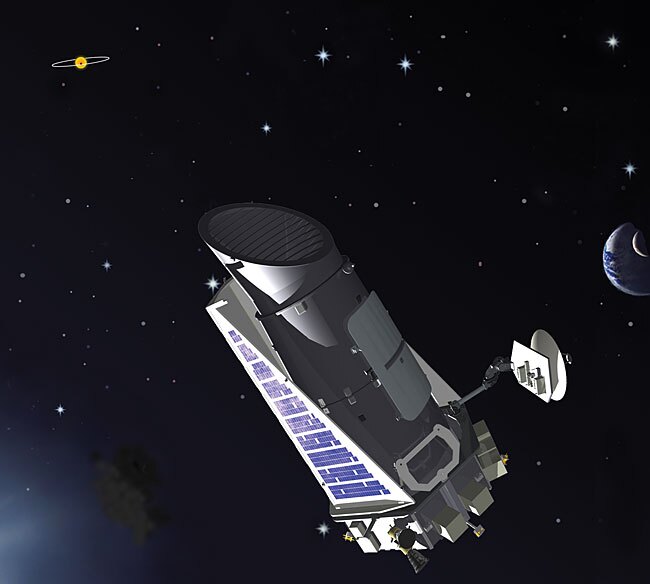A puzzling pair of planets
DOI: 10.1063/PT.3.1668
A puzzling pair of planets. In our solar system, the changing character of the planets with increasing distance from the Sun makes sense in terms of standard planet-formation theory: small rocky planets near the Sun, which would have largely stripped them of their volatiles, and icy gas giants in the solar system’s frigid outer reaches. But in recent years the discovery of many “hot Jupiters”—gas giants orbiting close to their stars—has generated theories of how planets might migrate far from where they’re formed. Now a team analyzing data from NASA’s Kepler telescope, shown here, has unveiled different evidence of possible planetary migration. Kepler monitors some 150 000 stars for periodic dimming that might indicate planets transiting across their faces. The team discovered two very dissimilar planets orbiting a solar-mass star (Kepler-36) in almost identical orbits. One appears to be a rocky super-Earth, denser than Earth with four times its mass. The other looks like a hot mini-Neptune, half as massive as its namesake and less dense than water.Although the unlikely pair’s orbital radii (roughly 20 million km) differ by only 10%, one planet is eight times as dense as the other. If they were formed far apart, it’s not obvious that the generally invoked migration mechanisms could explain their current proximity. Perhaps they were both formed close together as mini-Neptunes, and stellar irradiation preferentially eroded the lighter one’s gas envelope. (J. A. Carter et al., Science, in press.)





